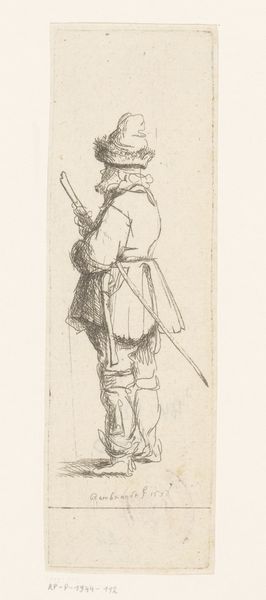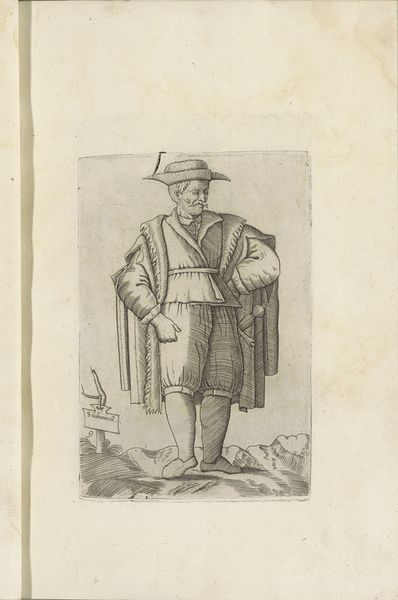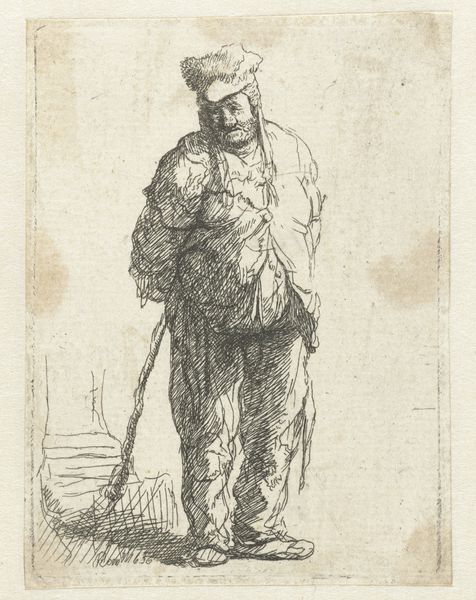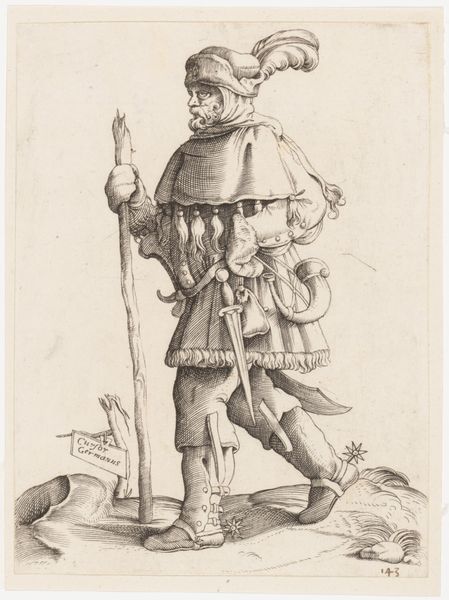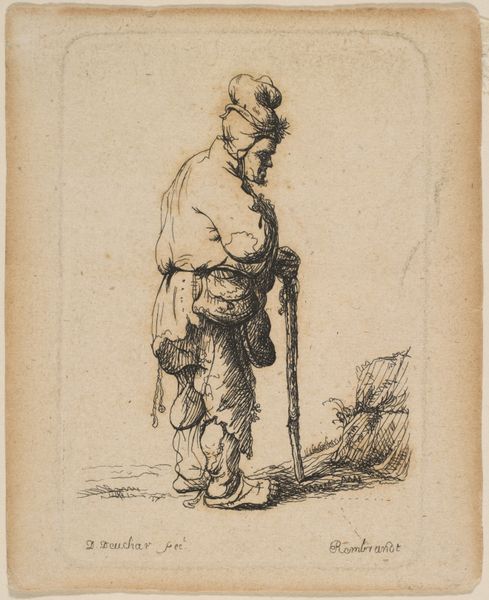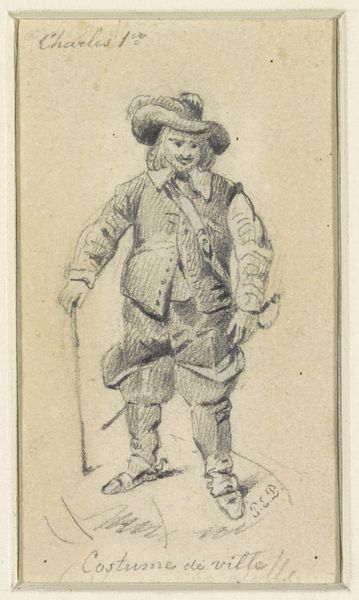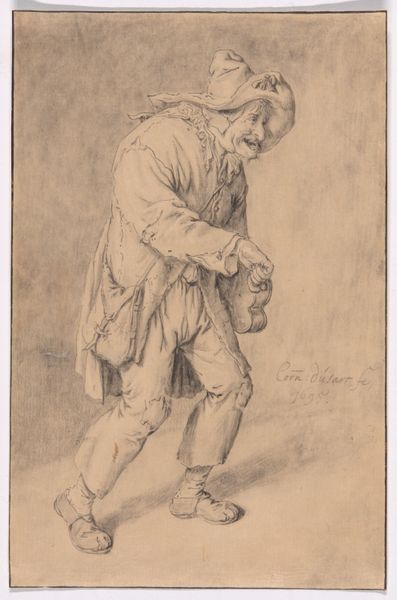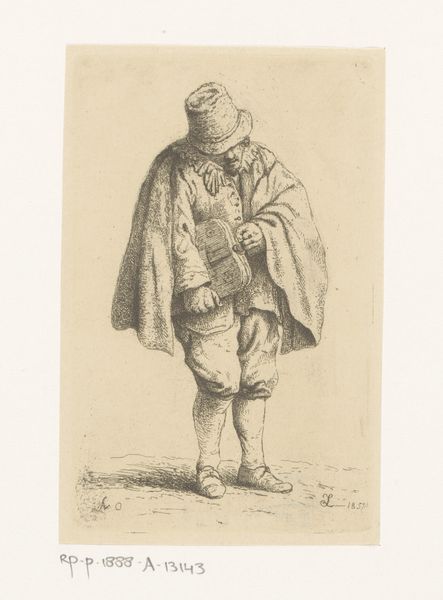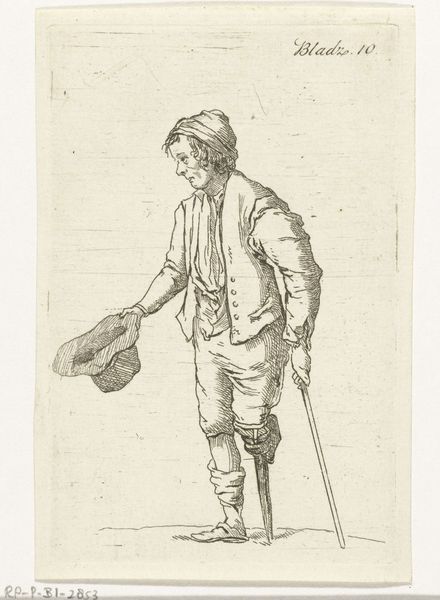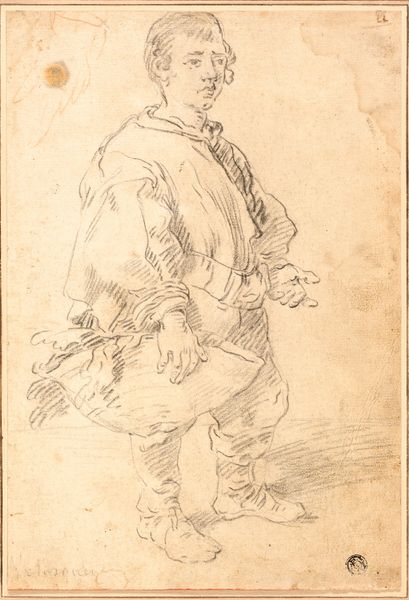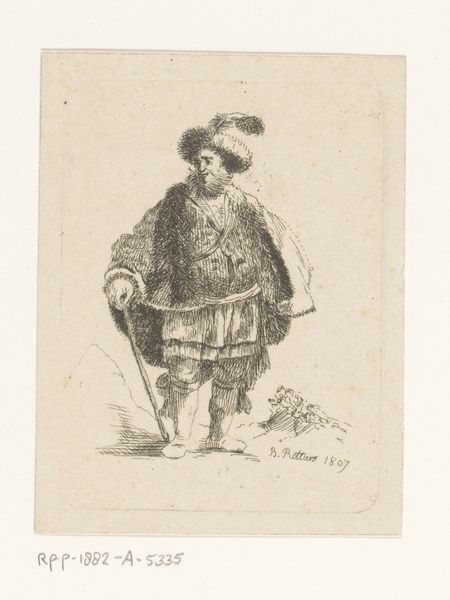
drawing, print, etching
#
drawing
# print
#
etching
#
pencil sketch
#
landscape
#
genre-painting
#
realism
Dimensions: height 240 mm, width 160 mm
Copyright: Rijks Museum: Open Domain
Editor: So, this is Wally Moes’ "Boerenjongen met mand en hark", which translates to "Farm Boy with Basket and Rake," dating from somewhere between 1866 and 1918. It's an etching, a kind of print. There’s a quiet melancholy to the boy’s posture. He looks weighed down. What do you make of it? Curator: It’s fascinating to see how Moes captures a specific social reality through such simple means. Consider the late 19th century Netherlands: agrarian life was idealized in some circles, but for many, especially young people, it was a life of hard labor with limited opportunities. Moes’s choice of etching, a readily reproducible medium, suggests an intention to disseminate this image widely, perhaps even as a social commentary. Editor: A commentary on child labor, maybe? Curator: Precisely. While idyllic landscapes were popular, Moes focuses on the individual toll. Note how his gaze is directed downwards. His oversized clogs and work tools are prominent, emphasizing his youth yoked to labor. Do you think this resonates with contemporary ideas about the dignity of work? Editor: Definitely, especially regarding fair labor practices and child welfare. Looking at it that way, it makes me consider how much images like this shaped public perceptions and maybe even drove social reform. Curator: Exactly. Moes’ choice to depict him alone also impacts our understanding. He is not working in a joyful communal setting. This isolation speaks to the lack of social safety nets. What do you think the response would be in contrast with more pastoral depictions? Editor: I imagine quite a different reaction. This seems to challenge a romantic vision with something more grounded in reality. I hadn't thought about how much an image like this can tell us about the socio-political landscape of its time. Curator: Indeed. Art serves as a powerful tool for both reflecting and shaping societal values. Understanding its historical context is vital. Editor: This really gave me a deeper appreciation for this unassuming piece. Thanks!
Comments
No comments
Be the first to comment and join the conversation on the ultimate creative platform.
